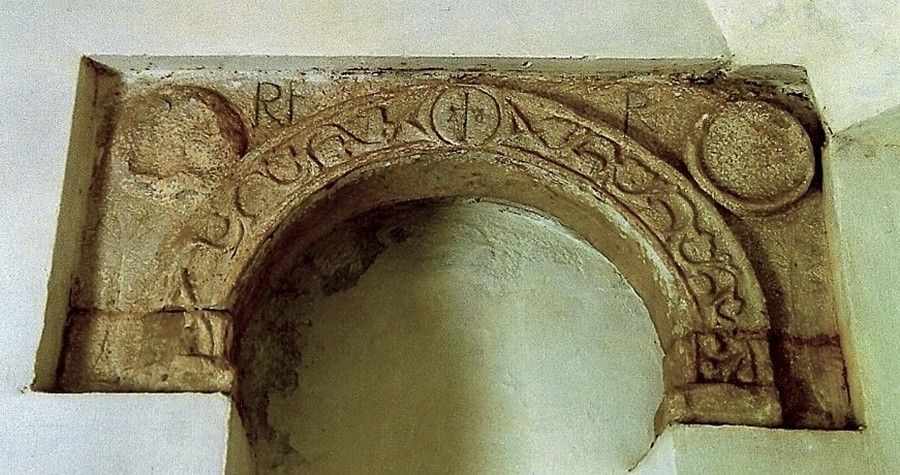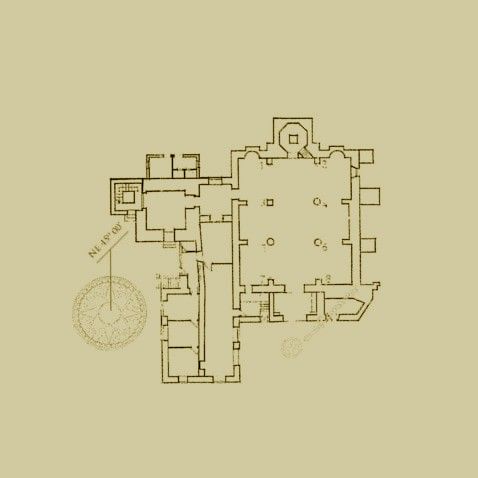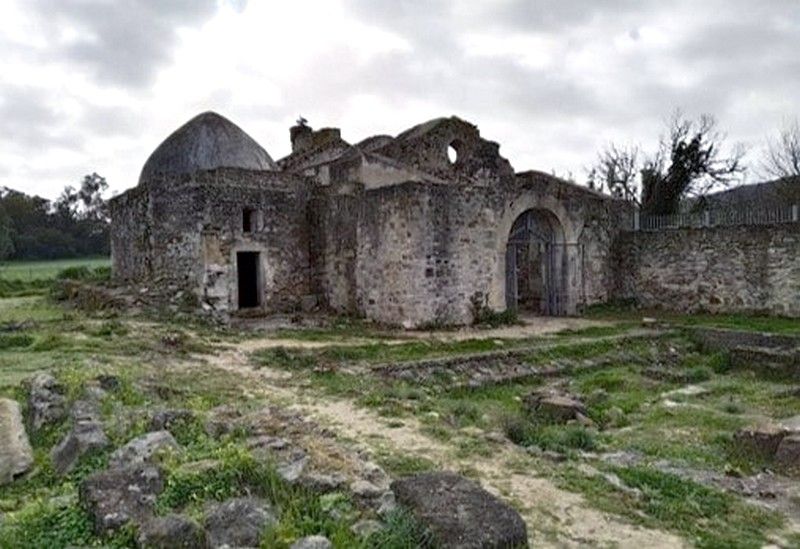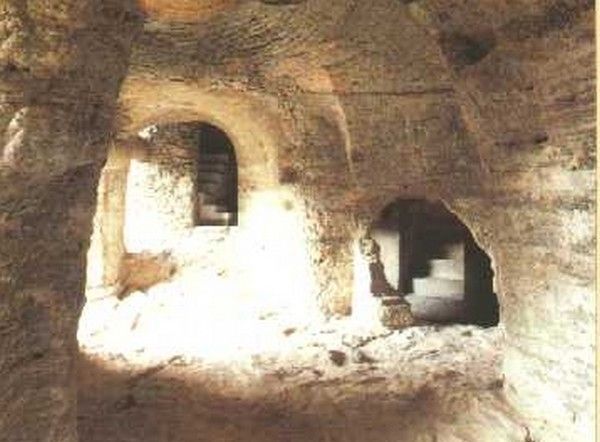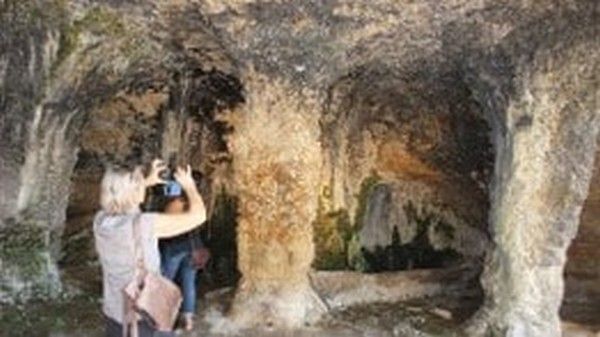ERMITA DE LOS SANTOS MARTIRES
Historic environment
The town of Medina Sidonia preserves heritage and archaeological remains that go back to the Paleolithic, with different documented remains in the vicinity of La Janda Lagoon. As we can read on the page of the town hall of the Cadiz municipality, Medina Sidonia is one of the oldest urban centers in the province of Cádiz, with more than 3,000 years of uninterrupted history, believed to be a Phoenician foundation (more fiction than reality). about a settlement from the Tartessian period.
In Roman times, Pliny the Elder mentions it in his work, with Colonial status, and it was known as Asido Caesarina, at which time it achieved a great urban transformation, of which the remains of sewers, street pavements are a clear example. , water tanks and other monumental buildings.
 In the 6th century, the Byzantines took and occupied the city, but in the year 571, Leovigildo recovered it for the Visigothic crown, turning the city into an episcopal seat, known as the Asidonian bishopric, appearing for the first time in the II Council of Seville, its bishop Rufino, in the year 618.
In the 6th century, the Byzantines took and occupied the city, but in the year 571, Leovigildo recovered it for the Visigothic crown, turning the city into an episcopal seat, known as the Asidonian bishopric, appearing for the first time in the II Council of Seville, its bishop Rufino, in the year 618.
With the Muslim invasion, the city continued to grow and gain in importance, being the capital of the Cora de Sidonia, at which time the city walls were erected.
In the year 844, the city was attacked by the Normans in one of their multiple incursions through the south of Hispania.
In 1264 it fell into Christian hands, conquered by Alfonso X el Sabio. Around 1440, it became part of the House of Guzmán, becoming in 1445 the Duchy of Media Sidonia.
At the beginning of the 19th century, French troops occupied the town, becoming the rearguard of the siege of Cádiz. In 1873, it was proclaimed as an Independent canton.
Description
The current church has three small naves, facing NE-SW. The central nave consists of three arches on each side, which are based on reused columns and pillars, highlighting Roman capitals, as well as some Visigothic cimacios. The arches are slightly stilted semicircular, emanating a certain Mudejar or Mozarabic air, rather than of Visigothic heritage. Behind the main altar, there is the dressing room of the Virgin, a quadrangular structure attached to the main factory.
The roof of the building is modern, the central nave being a coffered ceiling with a simple pair and knuckle, without decoration, while those of the side naves are one water, the wooden structure not visible to the eye.
 Throughout its surface, we find remains from the Roman period (shafts and capitals), Late Roman and Visigothic affiliation (inscriptions), all reused in different parts of the building, either as lintels in passageways, column supports or simply embedded in the walls.
Throughout its surface, we find remains from the Roman period (shafts and capitals), Late Roman and Visigothic affiliation (inscriptions), all reused in different parts of the building, either as lintels in passageways, column supports or simply embedded in the walls.
According to Juan Abellán, the building must have been built at the time of San Fructuoso de Braga who apparently visited these lands throughout the 7th century. The construction is due to Bishop Pimenio, who is mentioned in an inscription that is preserved inside the hermitage.
In the same way, this same author mentions that the current tower of the hermitage was from the 10th century, data that other authors corroborate, since its construction typology is from the Caliphate phase, with ashlars.
Regarding the different preserved heritage remains, as Rafel Sabio tells us, “There are so many monumental remains from the periodlate antique that populate the grounds of the Hermitage of Saints that has led to the belief that we are facing a church built on the remains of one from the Visigothic period. (…) The morphology of the building clearly refutes the first, with the unequivocally Mudejar fabric of the wide arcades that delimit the space of its three naves.”.
 Several reliefs with inscriptions have been known since the 18th century: “… The first serves as access to the sacristy, and consists of a lowered arch … an inscription whose text is… LEPERORE . VOMII SED SACR”. At the beginning of the 20th century, this inscription was reread again, proposing: “LEPERO RE(FECIT) UOMIDES ED(IS) SACRE, that is, Lepero redid the small altars of this sanctuary” (Sabio, 2011, 455-456). .
Several reliefs with inscriptions have been known since the 18th century: “… The first serves as access to the sacristy, and consists of a lowered arch … an inscription whose text is… LEPERORE . VOMII SED SACR”. At the beginning of the 20th century, this inscription was reread again, proposing: “LEPERO RE(FECIT) UOMIDES ED(IS) SACRE, that is, Lepero redid the small altars of this sanctuary” (Sabio, 2011, 455-456). .
“The second of the pieces… an arch, in this case, a semicircular one, found located at the access to the tower… is decorated with a vegetal border, being mistaken in its key by a circle in which it is inscribed a cross flanked by the alpha and the omega… The space of the spandrels is occupied by two circles, developing in the brief space… a brief inscription… to the left of the key, by the letters RE, and to the right of it, by an isolated R.” “The third… the most valuable of those mentioned from the epigraphic point of view… Its content begins after a cross, referring to the fact that the relics of a list of up to thirteen martyrs… The text closes with the authorship and the date of the deposition, carried out by Bishop Pimenio in the year 668 of the Hispanic era , that is, the 630 of the Christian” (Sabio, 2011, 457-458).
On the NW side of the hermitage, the crenellated tower of the complex is preserved, which is attached to it, or at least it seems so. Rafael Sabio tells us: “…the canonical nature of its rigging and the dating that it entails, at least for its lower half: the rope and the double brand used in it, verified with the visible one in the tower of the convent of Santa Catalina de Córdoba, makes them assert that we are facing a monument from the end of the 10th century” (Sabio, 2011, 459).
Rafael Caballero García and Rubén-Lot García Lerga for URBS REGIA
Bibliography
– Romero de Torres, E., 1909: La Ermita de los Santos en Medinasidonia.
– Sabio González, R.,(2011: “La Ermita de los Santos de Medina Sidonia: una hipótesis de trabajo sobre su origen y sentido”, Almoraima, revista de estudios campogibraltareños (42), 445-476.
– Abellán Pérez, J., 2014: “Los Mozárabes de la Cora de Sidonia”, Limes fidei: 750 años de cristianismo en Jerez, Santa Iglesia Catedral; Jerez de la Frontera, 53-62.
Portals









